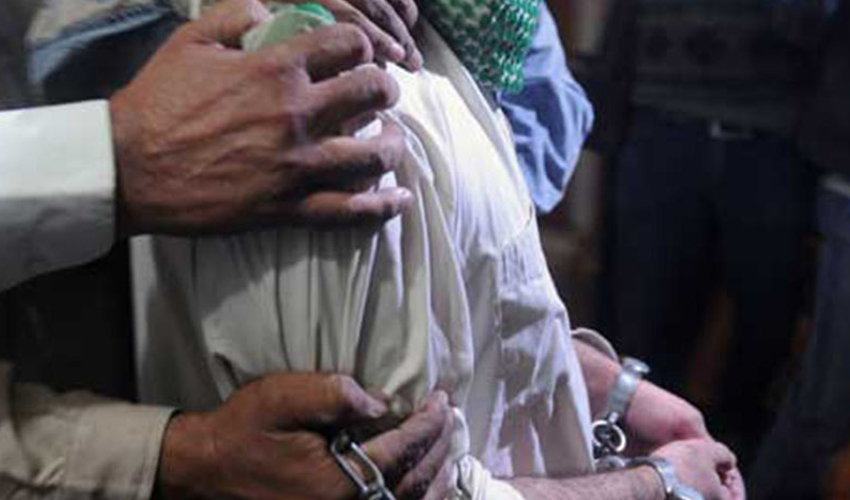Balochistan stands on the brink of becoming an epicenter of global economic development through its prime geographical placement and vast resources. Transformative projects like China-Pakistan Economic Corridor (CPEC) and the recently held mineral summit have added to its worth.
The initiatives create an unprecedented future foundation that supports the province and its citizens, along with potential investors worldwide. Balochistan has positioned itself as the new center of trade, mineral resources, and energy activities, and is set to function as a key area that serves as a gateway for connectivity.
Bridging continents
Since Balochistan positions itself at the junction where South Asia meets the Middle East and Central Asia, the region stands essential for international trade and energy pipeline operations. Under the CPEC, the Gwadar Port will serve as a maritime trading center.
Chinese western provinces along with Uzbekistan, Afghanistan, and other Central Asian countries benefit from the shortest maritime route via Balochistan to reach the Arabian Sea while reducing their shipments by 12,000 kilometers. The development of Gwadar as a regional trade hub will reach 13 million tons of yearly cargo processing by 2030, as per the Pakistan Ministry of Planning.
The key strategic location next to the Strait of Hormuz lets Balochistan emerge as an important energy corridor. Almost 20 percent of worldwide oil exports travels through this waterway; thus creating strategic value through coastal rail and road networks.
Balochistan’s connection to Eurasian commerce will be possible through planned transit routes to Afghanistan and Central Asia and existing pipelines between Iran and Pakistan for fostering economic collaboration along foreign frontiers.
CPEC: A game-changer
Crucial infrastructure is being developed under the $62 billion CPEC project that will benefit Balochistan in the years ahead. Through transport infrastructure, Gwadar boasts an 800-kilometer road network, which connects the port to Pakistan's national system and Xinjiang, China. Through the Eastbay Expressway, cross-town travel between Gwadar Port and the National Highway now takes only 20 minutes instead of two hours. Through its energy infrastructure, including the 300MW Gwadar Power Plant, CPEC delivers stable electricity supply. This allows industry to thrive and households to enjoy uninterrupted power, leading to improved living standards and enhanced productivity, which would subsequently increase investment in the region. The Gwadar Port Free Zone aims to establish 1 million jobs by 2035, and at least 30 percent of the workforce will proudly reflect the local Baloch community.
The three primary industries currently developing include logistics, manufacturing, and food processing. The future of Balochistan depends heavily on its vast mineral deposits, as explained during the recently held Pakistan Minerals Investment Forum 2025. Some of the main benefits of this initiative include:
Green future: The mineral wealth located in Balochistan corresponds to global needs for renewable energy along with emerging technologies. The copper and gold reserve at Reko Diq holds a $100 billion value and will produce 200,000 tons of copper annually in 2028 to support production of 5 million electric vehicles per year. The joint venture involving Barrick Gold from Canada, Saudi Arabia's Public Investment Fund, and Pakistan provides expert collaboration and investment opportunities.
According to the Pakistan Geological Survey, the lithium reserves of Balochistan totaling 2.2 million tons will provide 10 percent of worldwide demand for EV batteries, establishing the province as an essential player in EV supply chain operations. The Sui Gas Fields will boost their natural gas production to meet rising Pakistani and regional energy requirements. Furthermore, there are ongoing explorations for neodymium and other rare earth elements used in wind turbine components.
Global partnerships: During the 2025 summit, stakeholders committed $15 billion for sustainable projects that empower local communities. The Saudi government allocated $6 billion to launch a mining infrastructure project that features water-efficient mining extraction technologies. The government of Turkiye concluded a $3 billion agreement with Balochistan to develop hospitals along with setting up vocational training institutions and establishing road networks. The European Union announced that it would distribute $500 million in funding that supports green mining practices, combined with renewable energy development.
Improving lives: The mining sector will produce 500,000 direct and indirect employment opportunities by 2030, with local citizens receiving recruitment preferences. New mineral development royalty agreements stipulate Balochistan will receive 30 percent of royalties from provincial mineral operations as compared to only 12.5 percent in the past. Through partnerships with international firms, employees will gain specialized knowledge about mining engineering and robotics, as well as environmental management practices.
Balochistan's Transformative Potential
Global trade and energy hub: The Gwadar Port is expected to transform into a transshipment center comparable to Dubai by 2030. This is mainly because of the Saudi-funded oil refinery that will reduce Pakistan's fuel import expenses by 20 percent. Gwadar port will establish the base for Balochistan to become a digital corridor by implementing submarine fiber-optic cable connectivity to Africa and the Middle East.
Agricultural and Fisheries: The newly developed aquaculture facilities in Gwadar's coast have the potential to produce a $2 billion fisheries industry. The irrigation schemes supported by CPEC through drip irrigation technology will increase farming output by 40 percent in arid regions.
Stability and employment: The cooperation between Iran and Afghanistan in mining and energy businesses not only results in development of diplomatic relations between them but is also likely to yield significant benefits for Pakistan. Moreover, as many as 200 vocational centers will teach Baloch youth how to use technology and manage renewable energy sources and ports, which will lead to minimum unemployment.
Balochistan is likely to serve as a benchmark for sustainable development, mainly due to its strategic initiatives along with progressive policies and international alliances. The recent development projects function beyond their infrastructure and mining roles, enabling community advancement, economic variety creation and regional connectivity.
The government of Balochistan expects $30 billion in foreign investment during the next decade, which will improve the lives of millions of people, besides boosting Pakistan's Gross Domestic Product by 2 percent annually. The global community is currently focusing on Balochistan, driven by a shared vision to transform this previously overlooked region into an international symbol of collective progress. Responsible resource development with inclusivity in Balochistan will establish a promising future for its people, as it activates worldwide green transitions.


























